Junseok Lee
Towards LLM-Centric Multimodal Fusion: A Survey on Integration Strategies and Techniques
Jun 05, 2025Abstract:The rapid progress of Multimodal Large Language Models(MLLMs) has transformed the AI landscape. These models combine pre-trained LLMs with various modality encoders. This integration requires a systematic understanding of how different modalities connect to the language backbone. Our survey presents an LLM-centric analysis of current approaches. We examine methods for transforming and aligning diverse modal inputs into the language embedding space. This addresses a significant gap in existing literature. We propose a classification framework for MLLMs based on three key dimensions. First, we examine architectural strategies for modality integration. This includes both the specific integration mechanisms and the fusion level. Second, we categorize representation learning techniques as either joint or coordinate representations. Third, we analyze training paradigms, including training strategies and objective functions. By examining 125 MLLMs developed between 2021 and 2025, we identify emerging patterns in the field. Our taxonomy provides researchers with a structured overview of current integration techniques. These insights aim to guide the development of more robust multimodal integration strategies for future models built on pre-trained foundations.
Subgraph Federated Learning for Local Generalization
Mar 06, 2025
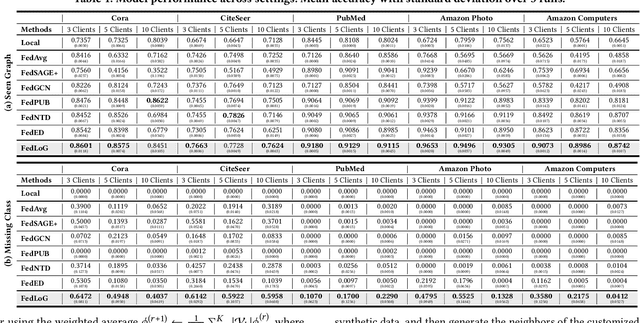
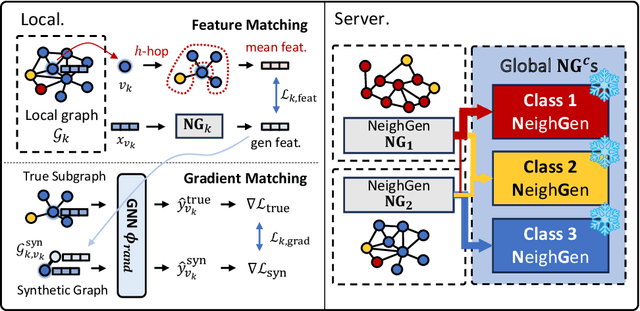
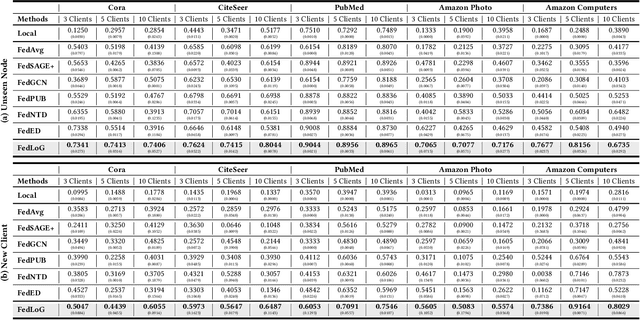
Abstract:Federated Learning (FL) on graphs enables collaborative model training to enhance performance without compromising the privacy of each client. However, existing methods often overlook the mutable nature of graph data, which frequently introduces new nodes and leads to shifts in label distribution. Since they focus solely on performing well on each client's local data, they are prone to overfitting to their local distributions (i.e., local overfitting), which hinders their ability to generalize to unseen data with diverse label distributions. In contrast, our proposed method, FedLoG, effectively tackles this issue by mitigating local overfitting. Our model generates global synthetic data by condensing the reliable information from each class representation and its structural information across clients. Using these synthetic data as a training set, we alleviate the local overfitting problem by adaptively generalizing the absent knowledge within each local dataset. This enhances the generalization capabilities of local models, enabling them to handle unseen data effectively. Our model outperforms baselines in our proposed experimental settings, which are designed to measure generalization power to unseen data in practical scenarios. Our code is available at https://github.com/sung-won-kim/FedLoG
3rd Workshop on Maritime Computer Vision (MaCVi) 2025: Challenge Results
Jan 17, 2025Abstract:The 3rd Workshop on Maritime Computer Vision (MaCVi) 2025 addresses maritime computer vision for Unmanned Surface Vehicles (USV) and underwater. This report offers a comprehensive overview of the findings from the challenges. We provide both statistical and qualitative analyses, evaluating trends from over 700 submissions. All datasets, evaluation code, and the leaderboard are available to the public at https://macvi.org/workshop/macvi25.
SoccerNet 2024 Challenges Results
Sep 16, 2024
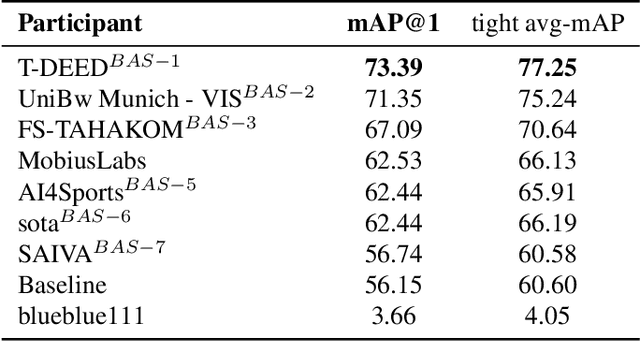
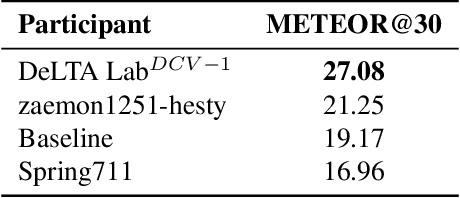
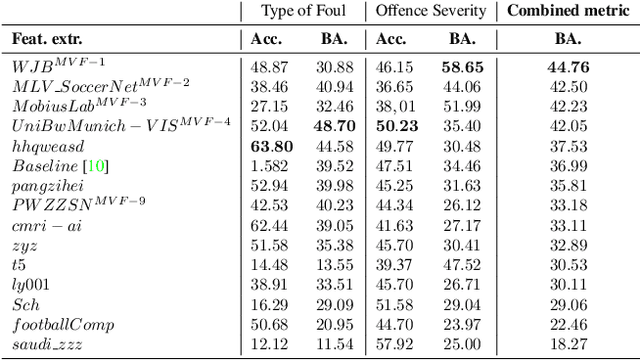
Abstract:The SoccerNet 2024 challenges represent the fourth annual video understanding challenges organized by the SoccerNet team. These challenges aim to advance research across multiple themes in football, including broadcast video understanding, field understanding, and player understanding. This year, the challenges encompass four vision-based tasks. (1) Ball Action Spotting, focusing on precisely localizing when and which soccer actions related to the ball occur, (2) Dense Video Captioning, focusing on describing the broadcast with natural language and anchored timestamps, (3) Multi-View Foul Recognition, a novel task focusing on analyzing multiple viewpoints of a potential foul incident to classify whether a foul occurred and assess its severity, (4) Game State Reconstruction, another novel task focusing on reconstructing the game state from broadcast videos onto a 2D top-view map of the field. Detailed information about the tasks, challenges, and leaderboards can be found at https://www.soccer-net.org, with baselines and development kits available at https://github.com/SoccerNet.
MART: MultiscAle Relational Transformer Networks for Multi-agent Trajectory Prediction
Jul 31, 2024Abstract:Multi-agent trajectory prediction is crucial to autonomous driving and understanding the surrounding environment. Learning-based approaches for multi-agent trajectory prediction, such as primarily relying on graph neural networks, graph transformers, and hypergraph neural networks, have demonstrated outstanding performance on real-world datasets in recent years. However, the hypergraph transformer-based method for trajectory prediction is yet to be explored. Therefore, we present a MultiscAle Relational Transformer (MART) network for multi-agent trajectory prediction. MART is a hypergraph transformer architecture to consider individual and group behaviors in transformer machinery. The core module of MART is the encoder, which comprises a Pair-wise Relational Transformer (PRT) and a Hyper Relational Transformer (HRT). The encoder extends the capabilities of a relational transformer by introducing HRT, which integrates hyperedge features into the transformer mechanism, promoting attention weights to focus on group-wise relations. In addition, we propose an Adaptive Group Estimator (AGE) designed to infer complex group relations in real-world environments. Extensive experiments on three real-world datasets (NBA, SDD, and ETH-UCY) demonstrate that our method achieves state-of-the-art performance, enhancing ADE/FDE by 3.9%/11.8% on the NBA dataset. Code is available at https://github.com/gist-ailab/MART.
M2Former: Multi-Scale Patch Selection for Fine-Grained Visual Recognition
Aug 04, 2023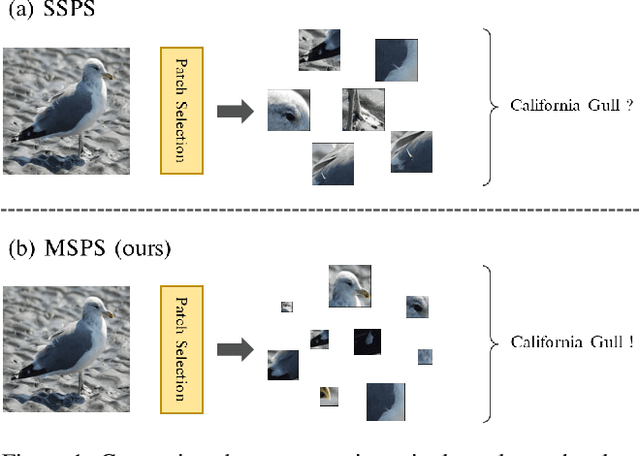
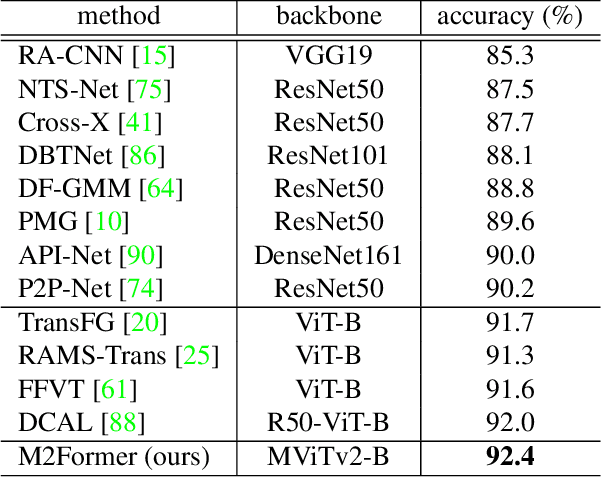
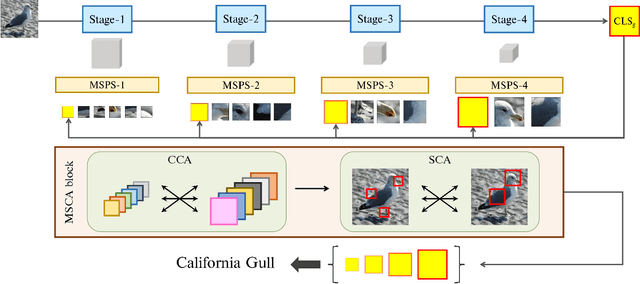
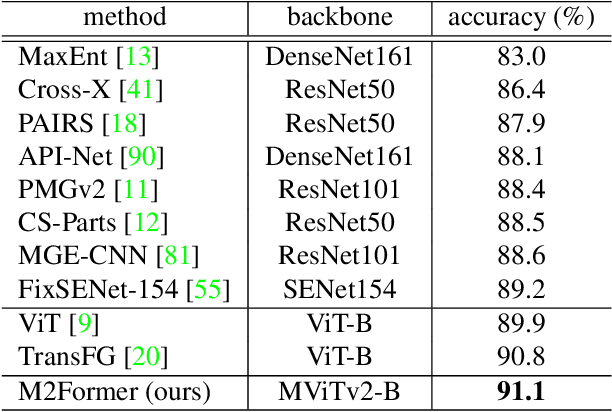
Abstract:Recently, vision Transformers (ViTs) have been actively applied to fine-grained visual recognition (FGVR). ViT can effectively model the interdependencies between patch-divided object regions through an inherent self-attention mechanism. In addition, patch selection is used with ViT to remove redundant patch information and highlight the most discriminative object patches. However, existing ViT-based FGVR models are limited to single-scale processing, and their fixed receptive fields hinder representational richness and exacerbate vulnerability to scale variability. Therefore, we propose multi-scale patch selection (MSPS) to improve the multi-scale capabilities of existing ViT-based models. Specifically, MSPS selects salient patches of different scales at different stages of a multi-scale vision Transformer (MS-ViT). In addition, we introduce class token transfer (CTT) and multi-scale cross-attention (MSCA) to model cross-scale interactions between selected multi-scale patches and fully reflect them in model decisions. Compared to previous single-scale patch selection (SSPS), our proposed MSPS encourages richer object representations based on feature hierarchy and consistently improves performance from small-sized to large-sized objects. As a result, we propose M2Former, which outperforms CNN-/ViT-based models on several widely used FGVR benchmarks.
Task-Equivariant Graph Few-shot Learning
Jun 01, 2023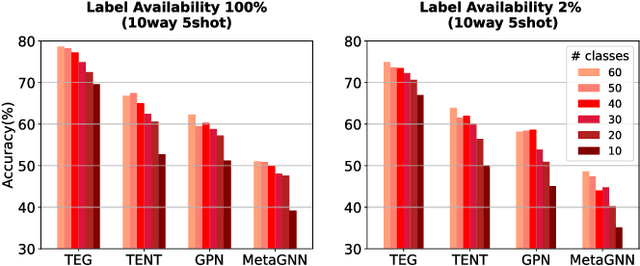
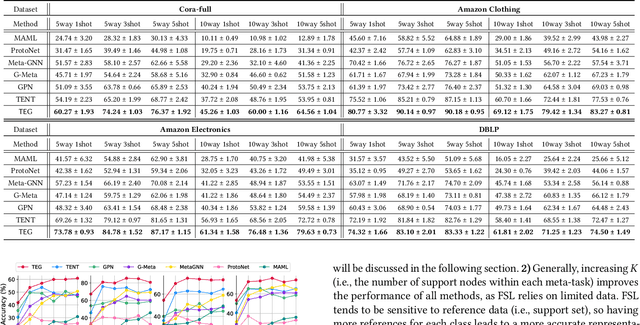
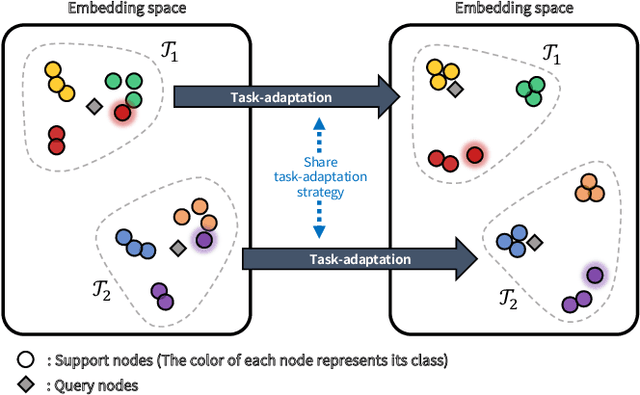
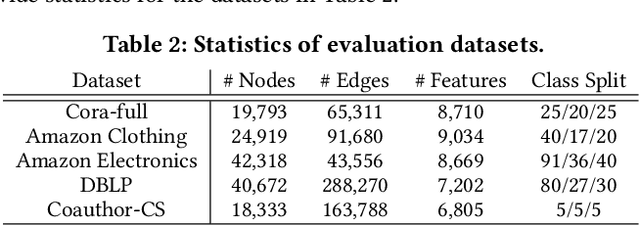
Abstract:Although Graph Neural Networks (GNNs) have been successful in node classification tasks, their performance heavily relies on the availability of a sufficient number of labeled nodes per class. In real-world situations, not all classes have many labeled nodes and there may be instances where the model needs to classify new classes, making manual labeling difficult. To solve this problem, it is important for GNNs to be able to classify nodes with a limited number of labeled nodes, known as few-shot node classification. Previous episodic meta-learning based methods have demonstrated success in few-shot node classification, but our findings suggest that optimal performance can only be achieved with a substantial amount of diverse training meta-tasks. To address this challenge of meta-learning based few-shot learning (FSL), we propose a new approach, the Task-Equivariant Graph few-shot learning (TEG) framework. Our TEG framework enables the model to learn transferable task-adaptation strategies using a limited number of training meta-tasks, allowing it to acquire meta-knowledge for a wide range of meta-tasks. By incorporating equivariant neural networks, TEG can utilize their strong generalization abilities to learn highly adaptable task-specific strategies. As a result, TEG achieves state-of-the-art performance with limited training meta-tasks. Our experiments on various benchmark datasets demonstrate TEG's superiority in terms of accuracy and generalization ability, even when using minimal meta-training data, highlighting the effectiveness of our proposed approach in addressing the challenges of meta-learning based few-shot node classification. Our code is available at the following link: https://github.com/sung-won-kim/TEG
Conditional Graph Information Bottleneck for Molecular Relational Learning
Apr 29, 2023



Abstract:Molecular relational learning, whose goal is to learn the interaction behavior between molecular pairs, got a surge of interest in molecular sciences due to its wide range of applications. Recently, graph neural networks have recently shown great success in molecular relational learning by modeling a molecule as a graph structure, and considering atom-level interactions between two molecules. Despite their success, existing molecular relational learning methods tend to overlook the nature of chemistry, i.e., a chemical compound is composed of multiple substructures such as functional groups that cause distinctive chemical reactions. In this work, we propose a novel relational learning framework, called CGIB, that predicts the interaction behavior between a pair of graphs by detecting core subgraphs therein. The main idea is, given a pair of graphs, to find a subgraph from a graph that contains the minimal sufficient information regarding the task at hand conditioned on the paired graph based on the principle of conditional graph information bottleneck. We argue that our proposed method mimics the nature of chemical reactions, i.e., the core substructure of a molecule varies depending on which other molecule it interacts with. Extensive experiments on various tasks with real-world datasets demonstrate the superiority of CGIB over state-of-the-art baselines. Our code is available at https://github.com/Namkyeong/CGIB.
Heterogeneous Graph Learning for Multi-modal Medical Data Analysis
Nov 28, 2022



Abstract:Routine clinical visits of a patient produce not only image data, but also non-image data containing clinical information regarding the patient, i.e., medical data is multi-modal in nature. Such heterogeneous modalities offer different and complementary perspectives on the same patient, resulting in more accurate clinical decisions when they are properly combined. However, despite its significance, how to effectively fuse the multi-modal medical data into a unified framework has received relatively little attention. In this paper, we propose an effective graph-based framework called HetMed (Heterogeneous Graph Learning for Multi-modal Medical Data Analysis) for fusing the multi-modal medical data. Specifically, we construct a multiplex network that incorporates multiple types of non-image features of patients to capture the complex relationship between patients in a systematic way, which leads to more accurate clinical decisions. Extensive experiments on various real-world datasets demonstrate the superiority and practicality of HetMed. The source code for HetMed is available at https://github.com/Sein-Kim/Multimodal-Medical.
Teaching Where to Look: Attention Similarity Knowledge Distillation for Low Resolution Face Recognition
Sep 29, 2022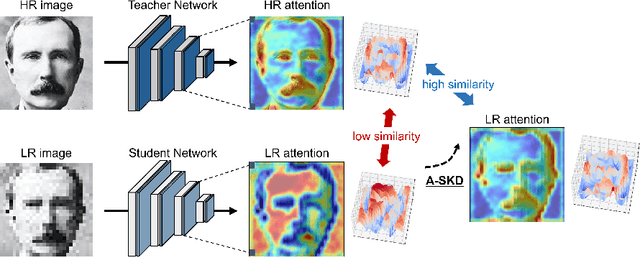
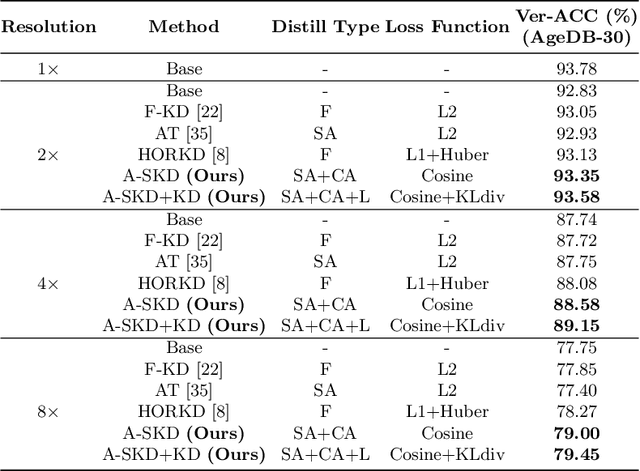
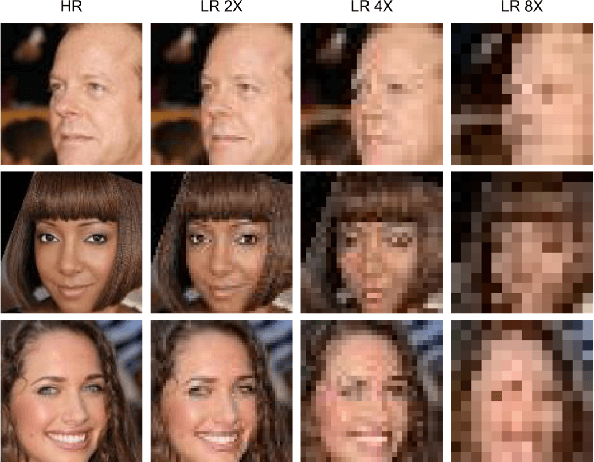

Abstract:Deep learning has achieved outstanding performance for face recognition benchmarks, but performance reduces significantly for low resolution (LR) images. We propose an attention similarity knowledge distillation approach, which transfers attention maps obtained from a high resolution (HR) network as a teacher into an LR network as a student to boost LR recognition performance. Inspired by humans being able to approximate an object's region from an LR image based on prior knowledge obtained from HR images, we designed the knowledge distillation loss using the cosine similarity to make the student network's attention resemble the teacher network's attention. Experiments on various LR face related benchmarks confirmed the proposed method generally improved recognition performances on LR settings, outperforming state-of-the-art results by simply transferring well-constructed attention maps. The code and pretrained models are publicly available in the https://github.com/gist-ailab/teaching-where-to-look.
 Add to Chrome
Add to Chrome Add to Firefox
Add to Firefox Add to Edge
Add to Edge